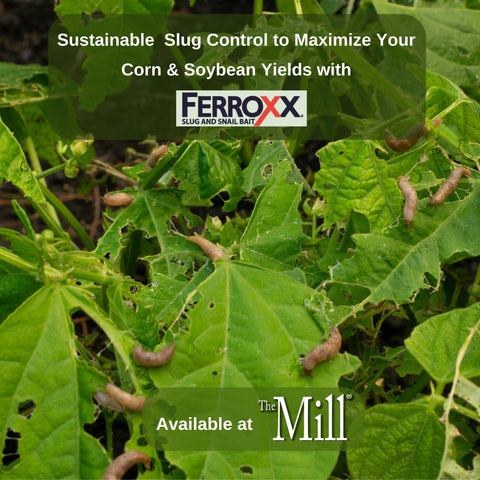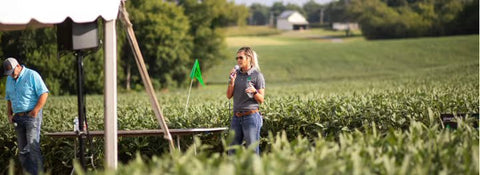Slugs can pose a significant threat to Mid-Atlantic crops, particularly soybean, corn, and produce, affecting yields and requiring strategic management to protect returns on investments. Slug damage have been a growing concern over the last few decades for multiple reasons and therefore, decisions for implementing practices to control slugs should take a holistic approach. A one-size approach will not fit all crop situations or all growing seasons.
Slugs are mollusks known for their voracious appetite for plant material. In corn and soybean fields, they can become particularly problematic, especially during certain weather conditions early in the season that favor their activity. There are 2 main types of slugs or snails afflicting crops in our area and they have 3 life cycle stages which are not cyclical and all 3 stages can overwinter in mild years. Because of the continuous reproductive cycle and ability to survive milder climates, slug populations are becoming more prevalent.

Slugs feed on young seedlings, causing irregular holes in leaves which reduces plant photosynthesis. This can result in stunted growth, delayed maturity, and, ultimately, lower crop yields. In produce like lettuce and strawberries, slugs can create havoc in a short time and render the majority of the crop unmarketable. Studies conducted in MD and PA have documented the impact of slug infestations on corn and soybean yields. Data shows that severe slug damage during critical growth stages can reduce crop stand to the point of needing to replant or causing significant yield losses, potentially reaching double-digit percentages.
Depending on weather conditions and the stage of the crop, soybean loss is especially concerning. The cotyledons and growing point for soybean plants is above the soil level, so it is very susceptible to heavy slug feeding that can kill the plant. Stand establishment can be reduced to the point of needing to replant. Corns' growing point is below the soil and does not emerge until 5-7 leaves are on the seedling. Even with significant slug feeding in the early stages, corn can recover from the leaf surface area loss, similar to hail-damaged corn seedlings. However, in farms pushing to maximize yields, this may create setbacks in the season that can affect yields. Where significant corn kill can occur is shortly after planting when the seed slot is not  closed. Slugs will not burrow into the soil to feed on ungerminated seeds, but if the slot isn’t closed after planting, they will eat both corn and soybean seeds.
closed. Slugs will not burrow into the soil to feed on ungerminated seeds, but if the slot isn’t closed after planting, they will eat both corn and soybean seeds.
Tip: At the beginning of planting season, check early and often to ensure seed planting depth is ideal and that the slot is closed, protecting the seed and providing good seed-soil contact.
Plant damage from feeding slugs also leaves the crop more susceptible to diseases. Bacterial, viral, and fungal diseases can infect plants that have physical damage from insects, weather, or birds, and not only reduce yields but under the right environmental conditions, can result in toxins in the harvested crop and persistence in the environment which may predispose future crops to diseases.
Why Are Slugs a Growing Concern?
There are multiple reasons why slugs have a greater economic impact on food production besides the overall higher costs of raising crops and bringing them to market. No-till cropping systems and climate conditions are two primary reasons for increased slug concerns. More acres are farmed under no-till cropping systems every year and in the past few years, spring climate factors have been favorable to slugs in the Mid-Atlantic area.
No-till has become a standard for MD and PA crop production. While beneficial for soil conservation, reduced inputs, and water management; no-till systems inadvertently create a favorable environment for slugs and plant diseases. The residue left on the soil surface provides shelter and moisture, enhancing slug survival. Multiple years in a no-till system without regard to slug or snail population growth can result in year-over-year reductions in yields.
Climate Conditions:
Slug activity is often influenced by weather conditions. Mild and wet conditions are favorable for slug overwintering and reproduction. If there has been an increase in such conditions over the past decade, it could contribute to higher slug populations. While research hasn’t identified climate change as a causative effect, there seems to be a correlation between milder and wetter conditions in the early growing season with more complaints of slug-damaged crops in this region. Additionally, ongoing research and increased awareness of slug-related issues may have led to improved monitoring and reporting. If there has been a heightened focus on slug management in recent years, it could contribute to a perception of increased slug prevalence.
Considerations for Minimizing Crop Loss from Slugs
- Cover Crops:
Researchers are exploring the benefits of cover crops in no-till systems that can reduce slug movement by creating a physical barrier. This also limits their access to young seedlings. Cover crop acres increase every year on Mid-Atlantic farms and the benefits include:
- Soil Health Improvements
- Nutrient Retention
- Reduced Soil Compaction
- Increased Organic Matter
- Improved Water Infiltration
- Reduced Stormwater and Nutrient Runoff
- Reduced Soil Erosion
The benefits of planting cover crops exceed the costs in generational farming systems and there may also be an opportunity to naturally reduce slug damage.
-
Biological Control
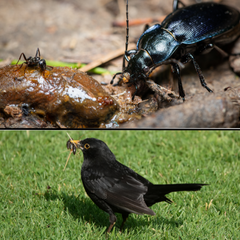
Birds and ground beetles are natural predators that can help reduce slug populations. Encouraging natural predators does not necessarily mean you cannot use other control methods for damaging insects. Research from the University of Maryland looked at insect and slug control from 2020-2022 . They concluded that population of predator beetles and slugs and the slug damage or lack thereof was not significantly affected between the insecticide-treated and control groups. While this study had limitations and not excessive slug populations, it is encouraging in considering biological control methods. More information can be found here: https://blog.umd.edu/agronomynews/2023/11/28/optimizing-early-season-pest-management-for-maryland-field-corn/
- Integrated Pest Management (IPM) Strategies:
Implementing an integrated approach to pest management is crucial. This involves combining cultural, biological, and chemical control methods to effectively mitigate slug damage while minimizing environmental impact. Selecting low-impact or natural chemical control methods is also possible. Applying only when the threshold indicates a significant crop impact will provide better ROI than using precautionary control measures. Good record-keeping on climate conditions, planting dates, and field scouting observations will help determine whether chemical controls are warranted. One product available at The Mill is Ferroxx Slug and Snail bait. Unlike other products, this bait has features that can work safely in multiple use cases to reduce slug damage including:
- Natural Iron chelates vs. toxic metaldehyde
- Can be used on almost all crops and sites with minimal environmental impact including crops, vegetables, ornamentals and turf
- Eco-Friendly blend of Iron Phosphate and bait additives that can be used around pets and wildlife.
- Safe for pets
- Longer lasting due to rain-resistance than other products
- Attractant to lure slugs which increases success vs products that require an accidental touch to work
- Blue color to see where it has been applied
- Lasts multiple years when properly stored
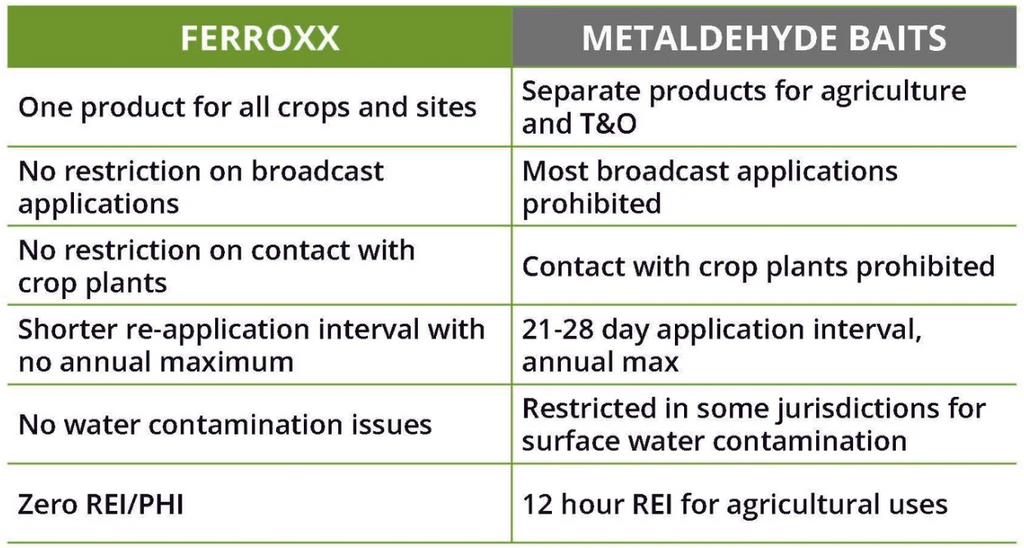
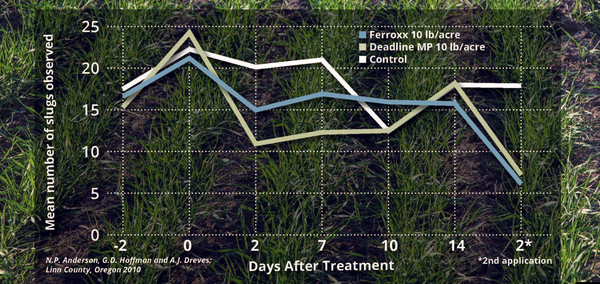
4. Timing of Planting:
Adjusting planting dates to avoid peak slug activity periods in a warm, damp spring can minimize damage and is a natural strategy, although delayed planting comes at a risk of reduced yields particularly if a summer drought occurs. This strategy may be manageable for small acres, but for farms with large acres, delaying planting is not recommended and better returns may be seen with getting seed in the ground early and using a control method.
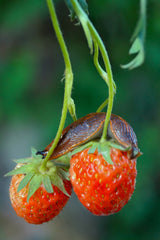
Future Research and Innovation
Ongoing research aims to explore innovative strategies for slug management in no-till cropping systems. This includes the development of resistant crop varieties and advanced monitoring technologies. Addressing slug control measures requires a holistic approach and takes into account the unique farm and weather conditions yearly. By integrating effective slug management practices and staying informed about the latest research, farmers, produce growers, and gardeners can mitigate yield losses and enhance the resilience of their crops in the face of slug pressure.


